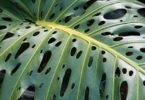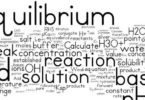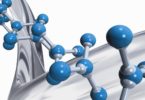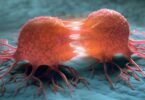Cell Division Questions / Answers:
Ques. Diploid living organism develops from zygote by repeated cell divisions is called
(a) Meiosis
(b) Amitosis
(c) Mitosis
(d) Segmentation
Ques. Which of the following is correct statement?
(a) Gametes are haploid
(b) Spores are invariably haploid
(c) Spores and gametes are invariably haploid
(d) Gametes are invariably haploid
Ques. A plant cell is distinguished from an animal cell by presence of:
(a) Nucleus
(b) Chloroplasts
(c) Cell Membrane
(d) Cell Wall
Ques. Which of the following is haploid?
(a) Primary spermatocytes & Primary oocytes
(b) Secondary spermatocytes & Secondary oocytes
(c) Spermatogonia and oogonia
(d) Germinal cells
Related: Ionic equilibrium questions
Ques. Recombination of genes occur at
(a) Prophase in mitosis
(b) Prophase I in meiosis
(c) Prophase II in meiosis
(d) Metaphase II in meiosis
Ques. Cell division is initiated by
(a) Centrosome
(b) Centriole
(c) Centromere
(d) Chromomere
Ques. What type of zoospores are produced by oospore of Albugo?
(a) Four diploid zoosperes
(b) Four haploid zoospores
(c) Numerous haploid zoospores
(d) Numerous diploid zoospores
Ques. Which out of the following is not a divisional stage
(a) Telophase
(b) Interphase
(b) Metaphase
(d) Prophase
Related: s block elements quiz
Ques. During the G1 phase of cell division
(a) RNA and proteins are synthesized
(b) DNA and proteins are synthesized
(c) Cell prepares for M-phase
(d) Cell undergoes duplication
Ques. During cell division chromosome attaches with spindles
(a) Kinetochore
(b) Centrosome
(c) Centriole
(d) Secondary constriction
Ques. Condensation of chromosomes occurs in
(a) Prophase I
(b) Prophase II
(c) Anaphase
(d) Metaphase
Related: Ray optics question bank
Ques. If there were 4 chromosomes present during prophase, how many chromosomes are there in each cell at the end of anaphase II
(a) 16
(b) 4
(c) 2
(d) 8
Ques. During cell division, sometimes there will be failure of separation of sister chromatids. This event is called
(a) Interference
(b) Complementation
(c) Coincidence
(d) Non-disjunction
Ques. Pachytene occurs during
(a) Meiosis
(b) Mitosis
(c) Growth of a cell
(d) Formation of endosperm
Related: Human health and disease MCQ
Ques. Spindle fibres are made up of
(a) Proteins
(b) Cellulose
(c) Lipids
(d) Pectin
Ques. Crossing over is advantageous because it brings about
(a) Variation
(b) Linkage
(c) Inbreeding
(d) Stability
Ques. Four chromatids and two centromeres which are homologous occurs in
(a) Zygotene
(b) Diplotene
(c) Diakinesis
(d) Pachytene
Related: Chemistry Redox reactions quiz
Ques. In which of the following stage, the chromosome is thin and like long thread
(a) Leptotene
(b) Zygotene
(c) Pachytene
(d) Diakinesis
Ques. During cell division in apical meristem nuclear membrane reappears in
(a) Interphase
(b) Telophase
(c) Prophase
(d) S phase
Ques. Which of the following will show simple cell division?
(a) Microspore mother cells
(b) Megaspore mother cells
(c) Archesporial cells
(d) All the above
Related: MCQ on Wave optics
Ques. Strasburger is famous for
(a) Discovery of cell division
(b) Proposing the term nucleoplasm
(c) Proposing the term cytoplasm
(d) All of these
Ques. Karyokinesis differ from cytokinesis because it involves
(a) Division of cytoplasm
(b) Division of the nucleus and cytoplasm
(c) Division of the nucleus
(d) Division of the cell
Ques. Which of the following cell division is found in prokaryotic cells?
(a) Mitosis
(b) Meiosis
(c) Amitosis
(d) All the above
Related: relation and function questions
Ques. The number of chromatids in a chromosome at anaphase is
(a) 2 in mitosis and 1 in meiosis
(b) 1 in mitosis and 2 in meiosis
(c) 2 each in mitosis and meiosis
(d) 2 in mitosis and 4 in meiosis
Ques. In which type of cell division spindle formation does not occur
(a) Mitosis
(b) Meiosis
(c) Endomitosis
(d) None of the above
Ques. The decision for division occurs in a cell at
(a) S phase
(b) G2 phase
(c) G1 phase
(d) None of the above
Related: multiple choice questions on Protists
Ques. Which one of the following forms the spindle apparatus during cell division?
(a) Chromosome
(b) Centrosome
(c) Ribosome
(d) Chondriosome
Ques. Prophase is longer in
(a) Mitosis
(b) Meiosis
(c) Equal in both
(d) Amitosis
Related: chemical bonding questions
Ques. The nuclear membrane disappears in
(a) Metaphase
(b) Early prophase
(c) Late prophase
(d) Anaphase
Ques. Cell plate is referred as
(a) Germplast
(b) Idioblast
(c) Phragmoplast
(d) Middle lamella
Ques. The process by which the chromosomes are separated in the sex cells and their number reduced from the diploid to haploid condition is known as
(a) Division
(b) Mitosis
(c) Conjugation
(d) Meiosis
Related: GOC in organic chemistry
Ques. “G0” state of cells in eukaryotic cell cycle denotes
(a) Check point before entering the next phase
(b) Pausing in the middle of a cycle to cope with a temporary delay
(c) Death of a cell
(d) Exit of cells from cell cycle
Ques. Which cell division is found during cleavage?
(a) Amitosis
(b) Mitosis
(c) Closed mitosis
(d) Meiosis
Ques. Which type of cell division occurs in the gonads?
(a) Mitosis only
(b) Meiosis
(c) Both (a) and (b)
(d) Amitosis and meiosis
Related: connective tissue quiz
Ques. In which phase of mitosis the chromosomes are arranged around the equator of the spindle
(a) Prophase
(b) Metaphase
(c) Anaphase
(d) Telophase
Ques. Mitosis and meiosis take place respectively in
(a) Meristem and gametangia
(b) Gametangia and meristem
(c) Permanent tissues and secretory tissues
(d) Secretory tissues and permanent tissues
Ques. The largest phase in cell division is
(a) Liptotin
(b) Zagotin
(c) Pacotin
(d) None of these
Related: Biotechnology principles and processes
Ques. Chiasmata formation occurs during
(a) Diplotene
(b) Leptotene
(c) Pachytene
(d) Diakinesis






